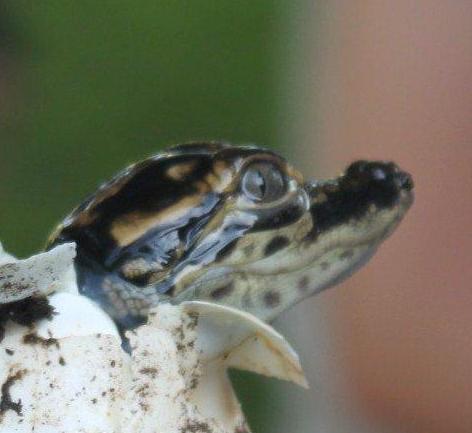|
Description – A short-tailed, reddish brown or grayish, medium-sized cat. Colors may vary, but most have reddish-brown upper parts streaked with black. Back of ears is usually rimmed with black, white in the center and slightly tufted. Hair on sides of face is long while rest of pelt is quite short. Tail usually rather short with a black tip on the top with three or four blackish bars near the tip, hence the name "bobcat". Occasionally, tail can be a bit longer than normal, but not by more than a few inches. Legs are relatively long in relation to the body size. Males are typically larger: length, 28-49 3/8 in.; tail, 3 3/4-6 in.; weight, 14 1/8-68 lbs.
Distribution in Texas – Statewide
Habitat – Although they prefer canyons or rocky outcrops, Bobcats may be found in a variety of habitats. Thickets are also preferred for dens sights and protection. This secretive and highly adaptable cat has been able to co-exist in areas of increasing human encroachment.
Mostly active after dark, bobcats may be sighted during early morning and late evening hours. Signs of their presence include feces droppings in open, obvious areas and "scrapes" (small piles of leaves and debris that are urinated on) along travel routes. These cats are experts at climbing trees. Calls sound much like a domestic cat. Piercing screams may result when the animal is threatened. Cough-bark sounds may also be heard. Animals are most vocal during mating season.
Diet consists mainly of small mammals and birds. Wood rats, ground squirrels, mice, and rabbits are preferred most often. Occasionally, a deer is killed and eaten, but mostly the deer meat found in stomachs is carrion. Domestic sheep, goats, and poultry have also been found but occurrences are minimal.
February is breeding season. Females breed between their second and ninth years. Gestation is about sixty days. Two to seven "kittens" are born with the average litter size at three. Kittens are furry and spotted at birth. Eyes open after about nine days and weaning occurs after about two months. With the arrival of fall, kittens begin to fend for themselves. Life span may be as long as twelve to thirteen years in the wild.
|




